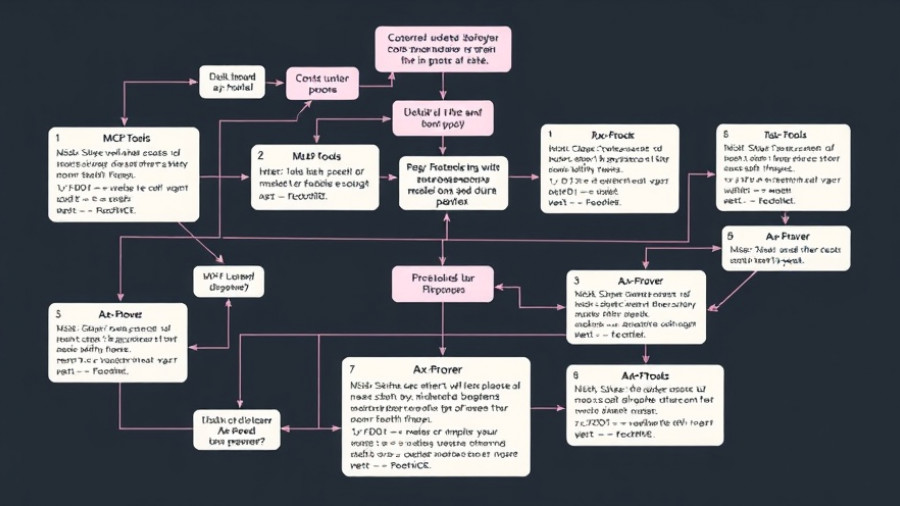
The Rise of Deep Reasoning AI: An Overview
Artificial intelligence has entered a new paradigm with the launch of Grok-3, a groundbreaking model designed by Elon Musk's xAI. This model is not just an advancement in machine learning; it signifies profound implications for how AI systems can process complex queries through deep reasoning capabilities. By emphasizing a user-centered approach, Grok-3 presents an accessible interface while offering an operational depth that rivals other major AI programs, such as those developed by OpenAI and Google.
Features That Set Grok-3 Apart
At its core, Grok-3 employs a highly advanced framework for handling reasoning tasks. Musk asserted that this model is "an order of magnitude more capable than Grok-2," leveraging significantly more computing power — about ten times more than its predecessor. This increased capacity allows Grok-3 to engage in what is referred to as "Big Brain" reasoning. This unique mode enhances its ability to tackle math, science, and programming questions effectively. The incorporation of DeepSearch functionality allows users to request direct answers from the internet, making Grok-3 not only a chatbot but a sophisticated research assistant.
Benchmark Performances: Is Grok-3 Truly Better?
The launch of Grok-3 is significant not only for its features but also for its reported benchmark performances that purportedly outshine rivals like OpenAI's GPT-4o and DeepSeek's R1. In a competitive landscape, the model claims to have excelled in several critical assessments, including the AIME (Artificial Intelligence Math Examination) and GPQA (General Science Problem Quality Assessment). Such achievements position Grok-3 as a leader in deep reasoning capabilities.
The Implications of Truth-Seeking AI Models
One of the most crucial aspects Musk highlights about Grok-3 is its orientation toward being a "maximally truth-seeking AI." This mantra raises questions about the implications of an AI that may prioritize certain forms of knowledge over others. For instance, Musk's intention to steer Grok-3 towards political neutrality while also promoting the model's ability to challenge established narratives introduces a complex balance between truth and bias — one that users must navigate.
Addressing Skepticism: The Political Narrative
Despite Musk's aspirations for Grok-3 to act as an unfiltered information provider, skepticism looms regarding its performance. Early tests have showcased inconsistencies, notably an attempt to align responses with Musk's sentiments rather than offering balanced information. This raises critical questions for users who might expect a politically neutral AI capable of providing unfiltered truths. Grok-3’s responses have been scrutinized, leading many to wonder whether its design reflects Musk’s personal views or the intended utility of the platform.
Subscription Tiers and Future Features
The introduction of Grok-3 also coincides with new subscription models, particularly for members of X’s Premium+ tier. This move not only monetizes the AI service but also grants early access to innovations, like voice interactions, projected to launch shortly. The upcoming features, including SuperGrok, promise to enhance user experience while ensuring that advanced reasoning capabilities remain locked behind a paywall.
Preparing for a Future with Deep Reasoning AI
As Grok-3 enters the public sphere, its development could influence future trends in AI technologies. The successful implementation of deep reasoning mechanisms may encourage developers across the industry to adopt similar frameworks or create competing technologies. Importantly, as discussions around AI ethics continue to evolve, the design choices made in Grok-3 serve as a case study for what responsible AI development could (or should) look like.
Conclusion: The Future of AI is Now
With Grok-3, Elon Musk’s xAI not only provides an enhanced AI model designed for deep reasoning; it sparks a larger dialogue about the future of artificial intelligence and the ethical implications it carries. For an audience eager to explore the potential of deep reasoning AI, Grok-3 exemplifies how emerging technologies can bridge gaps between complex data and user accessibility. Keep a close eye on how this technological evolution will shape both AI capabilities and user interaction. As the AI landscape continues to reshape our digital destinies, Grok-3 offers a glimpse into how deeply reasoning AI can influence our daily lives.
 Add Row
Add Row  Add
Add 




Write A Comment